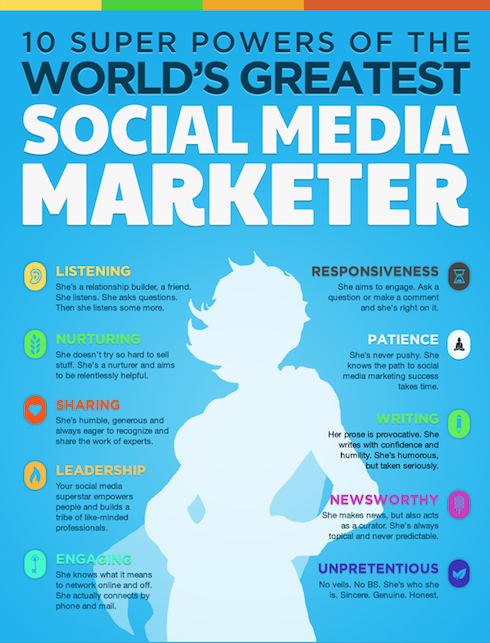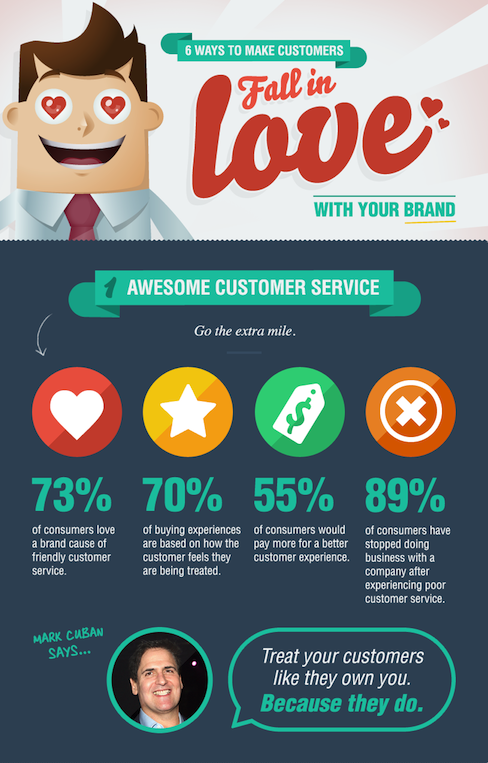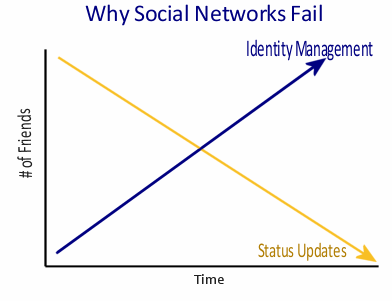By Liam Dowd - February 12th, 2014
Brand engagement, how to be a great social marketer, and is social media dead?
How to be a great social media marketer
A new infographic from Placeter reveals that brands should be paying more attention to the personal connections they are making with their advocates. According to this research auto-posting on Facebook for instance reduces likes by a massive 70% However, over 80% of social media users state that interaction with the businesses they want to buy from increases the chance a purchase will be made.
Consumers are now attuned to the content they see on their social media networks and inherently know if this material isn’t original or designed to engage with them. It seems that content is still king online, but the content has to be specifically crafted for a precise audience if they are to engage with it, and the content is to have the desired effect, which today is to interact with consumers right through the sales funnel.
Brand engagement
All brands are constantly searching for the elusive piece of content that will make their customers fall in love with their product or service. The new infographic from One Deep Design clearly indicates that emotion has a major role to play in the buying decision. For example, did you know adding a testimonial to your website could increase sales by up to 250%! More than 90% of buying decisions are influenced by visual factors. Customer loyalty can be worth 10 times as much as a single purchase.
The emotional attachment that some brands command – Apple being the prime example – should be a focus for all marketers as they build each campaign. The power of in-bound marketing is showing how well crafted content is highly attractive to consumers. Add an emotional aspect to this content or indeed any social media content your corporation is producing and see your business’ levels of engagement rocket.
Instagram intelligence
All corporations need to pay close attention to the ebb and flow of content across each social media network. At the moment visual content is highly popular, which makes the latest intelligence report from L2 very timely. The report’s headline says it all. Is Twitter the world’s most powerful social media platform? You could be forgiven for thinking this is nonsense after the platform posted less than glowing financial results last week. However, the report goes into minute detail and points to the platform’s massive growth over a very short space of time.
“Explosive growth, aspirational demographics, and unmatched engagement have secured Instagram’s place among the social media elite,” the report explains. “Instagram amassed 150 million monthly users in three years—two years faster than Facebook and half the time of Twitter. Although an eighth of parent company Facebook’s community, Instagram registers 15 times the engagement and double the engaged user base (Total Community Size x Engagement Rate) of the mother ship.
“Also, 93% of prestige brands now maintain a presence on the photo-sharing platform, up from 63% in July 2013. As teens migrate away from Facebook, Instagram has maintained its street cred and is the fastest growing global social platform. The visual platform acquired 60 million new monthly active users in 2013, the highest year-over-year growth (66%) among top 10 mobile apps.
“Visual media do more than communicate information, they inspire emotion and action. Serving a potent cocktail of visual and mobile, Instagram could be the first platform that delivers on the promise of social commerce via the power of user- generated content. Featuring user-generated photos at the point of purchase boosts conversion up to 7%. However, most prestige brands are failing to translate Instagram’s engagement to e-commerce, as just 14% utilize Instagram UGC on their brand sites.”
Social media is dead!
The demise of the world’s social networks has been a long time coming depending on who you listen to. The latest doomsayers may have a bit more credibility, as they are basing their predictions on the psychology of social sharing. PsychCentral states:
“All online social networks eventually fail. Before Facebook, there was Friendster and Myspace — leaders of the social networking space in 2004 (just 10 years ago). Now they are relegated to historical footnotes, or the butt of some joke. Facebook, too, will fail, even if it doesn’t look like it today. And that’s not due to any specific failing of Facebook, but rather of human nature and the psychology of online identity management.
“Here’s why all social networks inevitably fail: Identity management is what we all do, every day, consciously or unconsciously. We do it in-person, in face-to-face meetings at work, with our friends, and yes, even with our partners and lovers. But we do the vast majority of it consciously online. Identity management is simply the curation of the details of your life — what you choose to share, when and with whom. We’re doing it when we share a link on Facebook, or a video on YouTube. What network do we share this with? Who will see it? What will they think of us because we shared it?”
This ‘second thought’ before posting to a social media network is already understood. Facebook knows that over 70% of the material that its users enter into their profiles isn’t posted. Whether we move away from the torrent of content that now fills these networks is likely, but for now social media is a fertile channel that may have its faults, but is still embraced by its users.
Until next time….
The Useful Social Media team.
Next Reads
June 2014, New York
Become a social business: For superior marketing response, sharper corporate decision-making, enhanced innovation and a happier, more loyal customer
Brochure Programme


